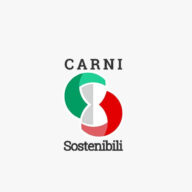
REPowerEU: the livestock farming role in our energy independence
With the escalation of tensions following the war in Ukraine, the EU needs to break its energy dependency on Russian gas. These days, the energy markets are soaring, bringing gas prices to record values while its availability remains in the hands of Russian authorities. Among the EU fossil fuel dependency on Russia, gas is the worst, with imports counting over 45% of our total consumption. A rapid transition to clean gas – in every meaning of the word – has never been so urgent, both for our sovereignty and the climate.
Faced with the need for swift action, the European Commission presented the REPowerEU communication ahead of the Versailles summit. This communication represents the second European response to the energy crisis, updating, so to speak, the much-publicised “Fit for 55” strategy of summer 2021. The aim is to support the diversification of energy supplies, accelerate the transition to renewable energy, and improve energy efficiency in the shortest time possible.
Executive Vice-President Timmermans set the objective to reduce imported gas from Russia by 2/3 by the end of the year. In this regard, the logical solution is to push the accelerator on renewable energy, starting with biomethane and clean hydrogen production. In addition to doubling the target on renewable hydrogen production, heat pumps, wind and solar energy, one of the critical pillars of the strategy is to multiply biomethane production by ten times in a few years. By doing so, the EU has the potential to replace 20% of the current natural gas imports from Russia by a sustainable, cheaper, and locally produced alternative.

Biomethane, as part of the biogas production, is obtained by the ‘digestion’ of organic materials, such as manure, organic waste or agricultural residues. Today the EU produces 3 billion cubic metres (bcm) of biomethane. Scaling-up to 35 bcm as announced requires the mobilisation of sustainable biomass feedstock, mostly waste and residues. According to the European Biogas Association figures; manure mobilisation from livestock represents the greatest potential for a sustainable increase of biomethane production by 2030 as far as – up to 45%! 30% of sustainably mobilised residues would come from the rest of the agricultural sector while a limited share of the future production could come from the management of our food waste (5%) and industrial wastewater (8%). In other words, the biomethane produced by livestock farms is becoming a strategic priority within the 2030 horizon.

However, to reach this potential, a silent revolution will have to take place on our farms. The European Biogas Association estimates that we will need to build about 5,000 new biomethane plants! This objective is feasible if we consider that Germany alone has built 6,000 plants in 9 years. From a technical perspective, experts estimate that it would be feasible within the next eight years. A quick fix which would also be easier and cost effective is to equip existing biogas installations (representing a 17 bcm biogas production output today) with methanation units. One of the main obstacles for the farming community is often the lengthy administrative procedures before such facilities can be set up. The Commission has announced in its communication that it will make efforts to reduce the time needed to obtain permits.
The stakes are therefore enormous, and the benefits for society could be manifold. Developing biomethane solutions would be cost-effective as the €80 billion needed for the biomethane upscale by 2030, would be money fuelled directly into our domestic economy. It allows us to produce biomethane at a cost that is considerably lower than the natural gas price over the past several months, even without taking the CO2 price into account.
#Biomethane, as part of the #biogas production, is obtained by the digestion of organic materials. The biomethane produced by #livestock farms is becoming a strategic priority within the #2030Horizon. Click To TweetFinally, biomethane and biogas production helps to reduce exposure to food price volatility. In fact, gas is obtained from a feedstock, placed inside a digester; a silo for the degradation of the organic substance. During the biogas production process, we obtain a nutrient rich product called digestate. This can be used as a fertiliser which could help partly break the dependency on Russian synthetic fertiliser imports. On top of that, digestate as organic fertliser, prevents the use of natural gas for the production of chemical fertlisers, reducing dependency on natural gas and at the same time avoiding considerable amounts of GHG emissions. Considering that Russia is the world’s leading exporter of fertilisers, with more than 50 million tonnes of fertiliser a year, 13% of the world total, boosting the digestate from livestock farming is an unmissable opportunity.
Once again, here is another excellent reason why the EU should preserve its livestock and animal production. Indeed, more than ever before, the EU’s livestock and animal production must be valued and enhanced as an essential tool to achieve energy, self-sufficiency and to accelerate the green transition. To reduce emissions and the dependence on fossil fuel imports, protect against rising prices and make a valuable contribution against climate change, adding new impetus to the objectives of the European Green Deal.
Source: European Livestock Voice





